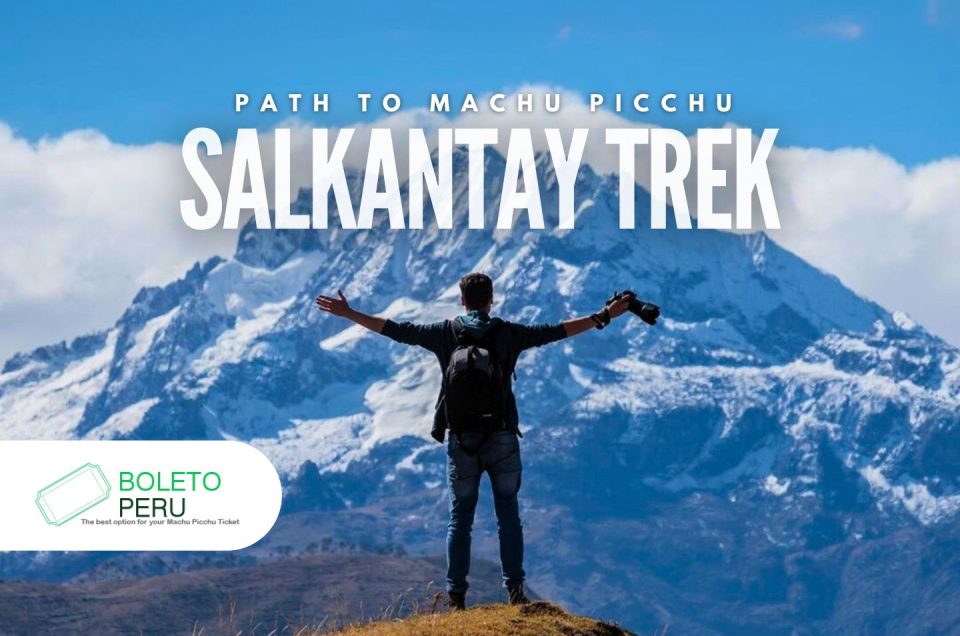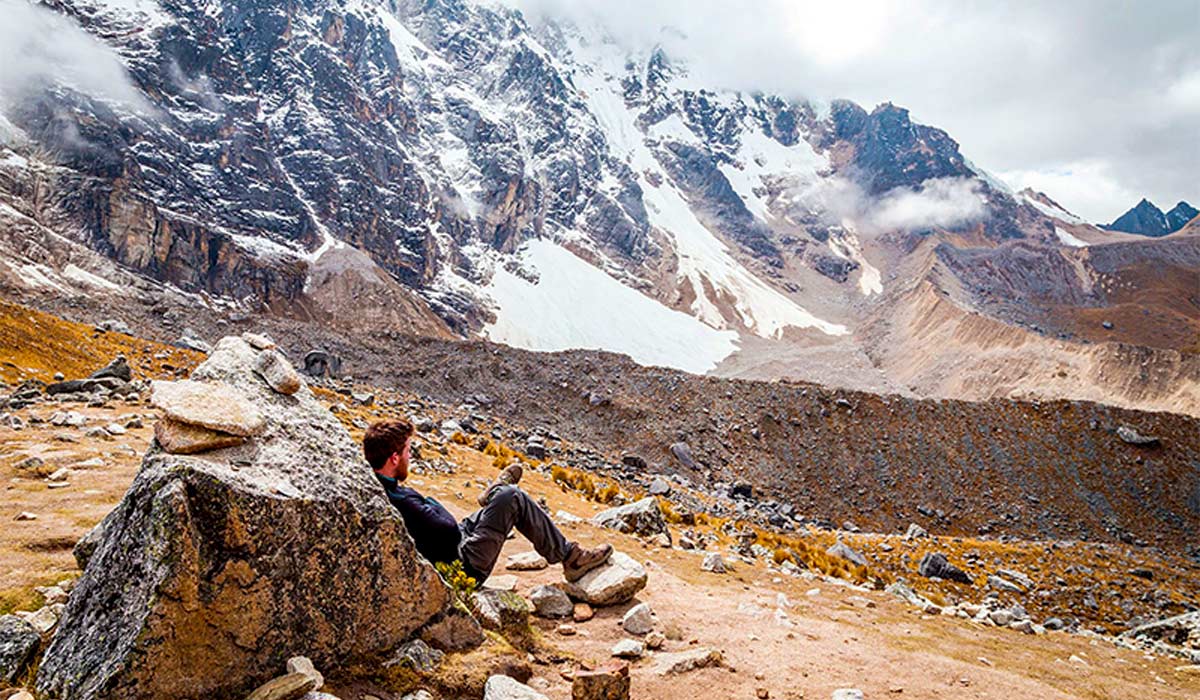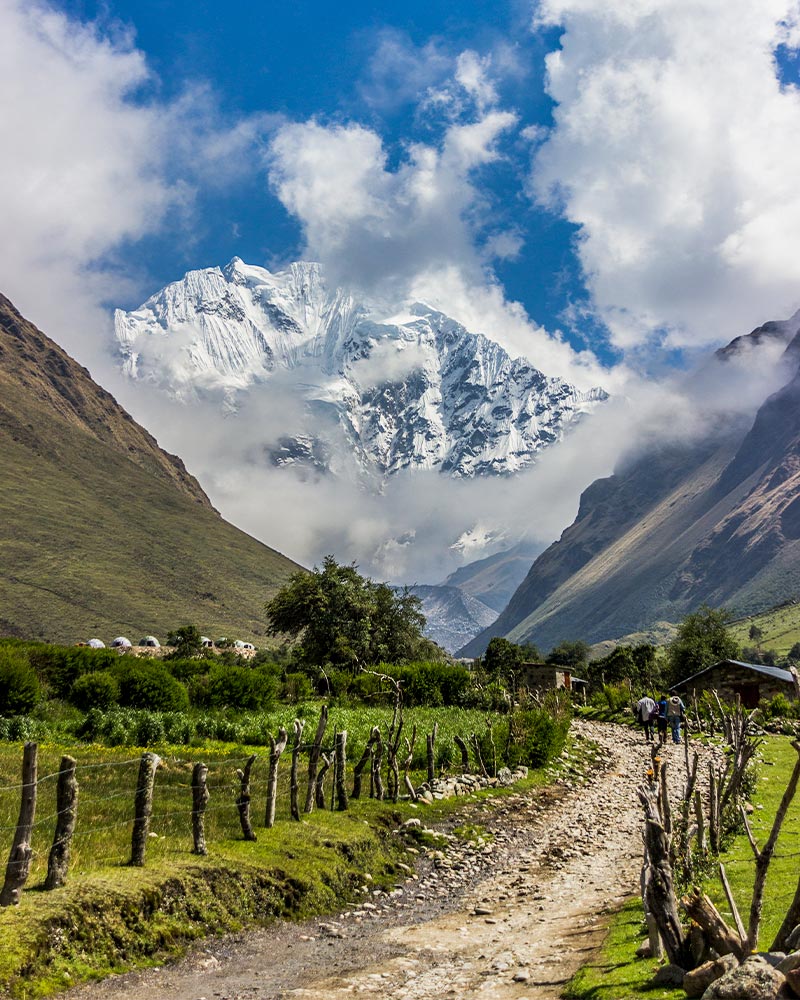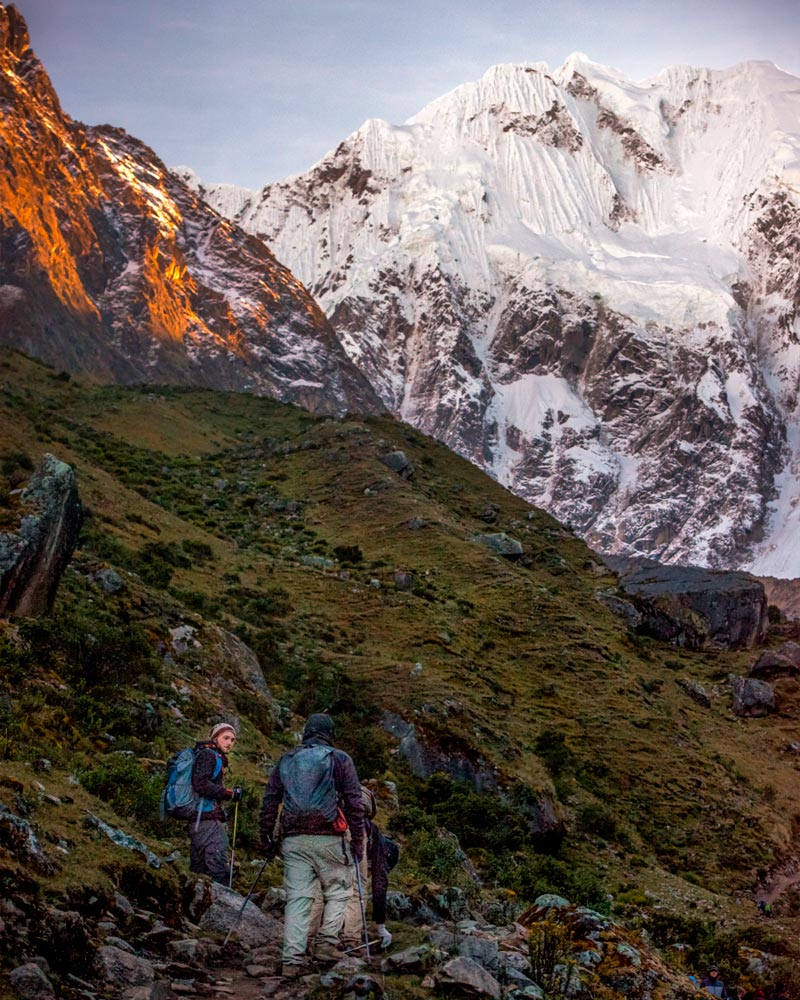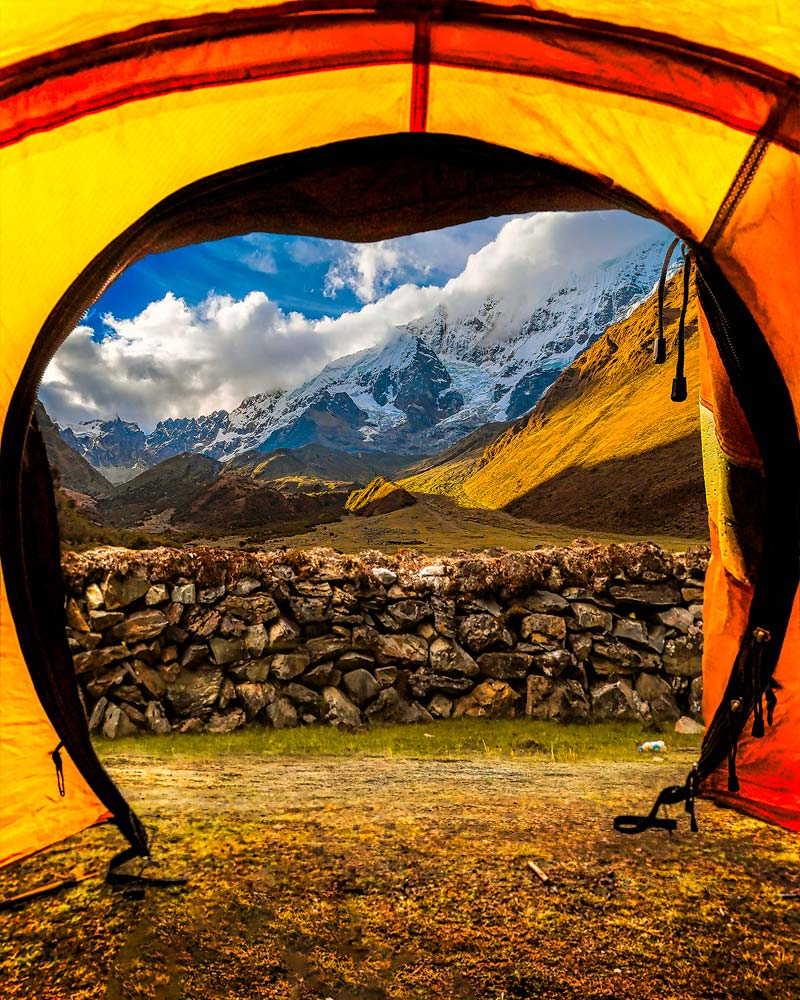Among the high peaks of the Peruvian Andes mountains, the Salkantay Trek stands out as one of the most amazing hiking routes in the country. This trip of several days connects the area of the Salkantay snow-capped mountain with the majestic Machu Picchu, offering a hard but less crowded way to get there than the famous Inca Trail. Named after Mount Salkantay, one of the tallest mountains in Peru, this trek mixes adventure, extreme nature, and a deep connection with Andean history. It is a journey that goes through deep valleys, clear lakes, high mountain passes, and tropical forests full of life.
Throughout this blog, we will explore why the Salkantay Trek Peru has become famous among tourists. We will talk about the landscapes that make it an unforgettable experience, the stages of the journey, the interaction with local communities, and all the information needed to plan and fully enjoy this adventure. If you are thinking about an adventure that combines challenges, nature, and culture, this path will definitely be an option worth exploring.
What makes the Salkantay Trek so famous?
Although the Inca Trail is the best-known route to reach Machu Picchu, the Salkantay Trek has gained recognition as an equally fascinating alternative, and even more appealing to certain travelers. This route does not require permits months in advance, which makes it more accessible for those looking for an authentic experience without the logistical limits of the Inca Trail. In addition, it offers more contact with pure nature and fewer crowds, which means a more personal and intimate trip.
The Salkantay Trek is also ideal for those looking for a greater physical challenge and a route with more diverse landscapes. Throughout its approximately 43 miles of hiking, adventurers cross high mountain areas, snowy passes, tropical jungles, and remote Andean communities. This variety, added to the final connection with Machu Picchu, makes this journey a truly unforgettable experience.
A Look at the Variety of Landscapes and Experiences
One of the biggest reasons why the Salkantay Trek is so memorable is the surprising variety of natural places you walk through in just a few days. From the huge Salkantay pass, more than 15,000 feet high, where glaciers tower over the view, to the green plains covered in mist of the high jungle, each day offers a completely different setting. This contrast of landscapes not only makes the walk look more beautiful, but it also lets the traveler really feel the change between the Andes and Amazon regions of Peru.
But it’s not just about nature. Along the way, travelers have the chance to talk with local communities. Visiting small farms, tasting organic food grown in the area, and learning about Andean customs add a deep cultural layer to the experience. The Salkantay Trekking is not just a walk, but a journey through the land, the weather, and the living culture of Peru.
About Salkantay Mountain
1. Meaning of the name “Salkantay”
The name “Salkantay” comes from Quechua, the old language of the Andes, and it means “wild mountain” or “untamed mountain.” It is made up of the words salqa (wild, untamed) and antay (to produce avalanches or landslides), which shows both its greatness and its powerful and challenging nature. In Andean culture, Salkantay is seen as an Apu, which is a sacred mountain spirit and protector of the nearby communities.
2. Geographic Location
Salkantay is located in the Cusco region, within the Vilcabamba mountain range, in southern Peru. It is in the Anta province, about 37 miles northwest of the city of Cusco. Its closeness to Machu Picchu Peru, even though not right next to it, makes it an important landmark within the routes that lead to the old Inca city. The mountain stands as one of the highest in southern Peru and dominates the landscape with its snowy shape, visible from many points of the trek.
3. Important Facts about Salkantay
The Salkantay Mountain reaches a height of 6,271 meters above sea level, which makes it the second highest mountain in the Cusco region and one of the highest in the entire eastern mountain range of the Andes. Its peak, constantly covered in snow, is part of a high mountain ecosystem with glaciers, rocky outcrops, and steep cliffs.
The weather in the area changes a lot: in the highest parts, temperatures can drop below 0°C at night, while in the lower areas, close to the high jungle, the environment becomes warm and humid. This weather variety makes hikers need to be well prepared for extreme conditions. Geologically, Salkantay is made up mainly of igneous and metamorphic rocks, shaped by millions of years of tectonic activity, which gives it its rugged shape and impressive glacier walls.
The Salkantay Trek to Machu Picchu
The Salkantay Trek is a hike of about 70 to 75 kilometers that is done in 5 days and 4 nights (on average), ending with the successful entry to Machu Picchu. Unlike the traditional Inca Trail, this route does not require special permits and is open almost all year round. The usual starting point is Soraypampa, at about 3,900 meters above sea level, and from there you go up towards the Abra Salkantay, the highest pass of the journey, before starting the gradual descent towards the high jungle. Finally, you reach the town of Aguas Calientes, from where you can get to the Inca city.
Stages of the Trekking: Challenges
The Salkantay Trek is a physically hard experience. The hardest part is the second day, when you go up to the Salkantay Pass at 15,269 feet above sea level, where the air is thinner and it’s very cold. Getting through this part needs strength, getting used to the altitude, and determination. After that, going down to warmer areas might seem easier, but it still means long daily walks of 6 to 8 hours.
Each day has a change of ground, which makes your body keep adjusting: from rocky high mountain paths, going through wet dirt trails, to narrow paths between plants. Even though it’s hard work, every step is rewarded with amazing views and a constant feeling of personal success.
Meeting Local Communities
One of the great things about the Salkantay Trek Peru is the direct contact with the Andean communities that live along the route. Along the way, especially in areas like Huayracmachay, Collpapampa, or Lucmabamba, travelers meet families who offer food, hot drinks, simple places to stay, and even shows of their daily life.
These meetings let you learn closely about the living culture of the Andes: from traditional farming, growing coffee or native fruits, to old rituals of respect for the earth (Pachamama). This human interaction makes the trip deeper and turns it into more than just a physical challenge: it is also a cultural bridge.
The Change of Landscapes (From Snowy Mountains to Tropical Jungle)
Another of the most amazing things about the Salkantay Trek is the big change in landscapes. The walk starts in a high mountain area, surrounded by snowy peaks, glaciers, and frozen lakes. Then, the path goes down into green valleys and deep canyons, until you reach the edge of the jungle, where the plants become thick and wet.
This difference in the area lets you experience in just a few days what in other places would take weeks of travel: from the cold quiet of high places to the warm sounds of the tropical jungle. Seeing how the landscape changes with every step makes a special connection with the geography of Peru and makes the Salkantay Trek a satisfying and visually stunning hike.
|
|
|
|
Important Facts to Plan Your Adventure
Best time to do the Salkantay Trek
The best time to do the Salkantay Trek is during the dry season, which is from April to October, with May and September being the best months because they have stable weather and fewer crowds. During this season, the sky is usually clear, which lets you fully enjoy the landscapes and lowers the risk of heavy rains that could make the trip hard.
The rainy season, from November to March, is not the best time, because the constant rain can make the paths slippery and dangerous, and also make it hard to see.
Current Permits and Rules
Unlike the Inca Trail, the Salkantay Trek does not need official permits from the government to hike it, which makes it a more flexible choice for people who decide on their trip closer to the date. However, if you do the trek with a company, they will take care of getting the entrance tickets to Machu Picchu and, in some cases, also the bus or train tickets back from Aguas Calientes.
It is very important to book your entrance to Machu Picchu ahead of time, especially if you want to go to other areas like Huayna Picchu Mountain or Machu Picchu Mountain, because there are only a few spots available. Also, it’s a good idea to stay updated on local rules or temporary closures for maintenance or weather conditions.
Level of Physical Difficulty and Recommended Preparation
The Salkantay Trek is seen as medium to hard in terms of how physically demanding it is. Even though it doesn’t need mountain climbing skills, the high altitude, uneven ground, and long days of walking (6 to 8 hours each day) are a big challenge for people who are not used to hiking at high altitudes.
It is recommended to prepare for at least two weeks beforehand, with long walks and cardio training. Also, it is vital to get used to the altitude properly in Cusco (at least two days before starting the trek) to lower the risk of altitude sickness. Being in good physical shape not only makes the experience better but also keeps you safe during the whole trek.
Essential Gear for a Successful Hike
Having the right gear makes a big difference during the Salkantay Trek. Some key items include:
- Strong and waterproof hiking shoes
- Clothes in layers, including warm, fleece, waterproof, and quick-drying clothes
- Hat, warm hat, gloves, and sunglasses
- Trekking poles (good for stability when going downhill)
- High-altitude sleeping bag (especially if camping)
- Sunscreen and insect repellent
- Reusable water bottle and water purifying tablets
- Headlamp and extra batteries
- Backpack of 8-10 gallons (for hikes) and duffel bag for the rest of your luggage (carried by mules, if applicable)

